HMVue6.2【插槽】
1 初始项目
同HMVue6.1

npm install 或者 npm i 也行
npm audit fix
2 什么是插槽
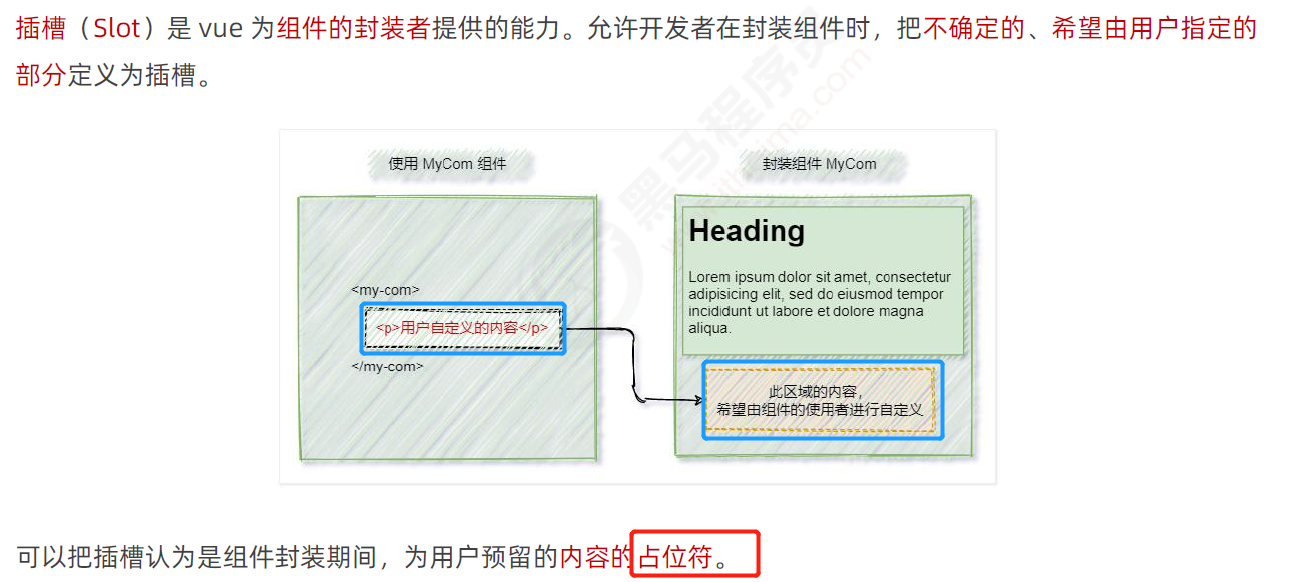
3 插槽的基础用法
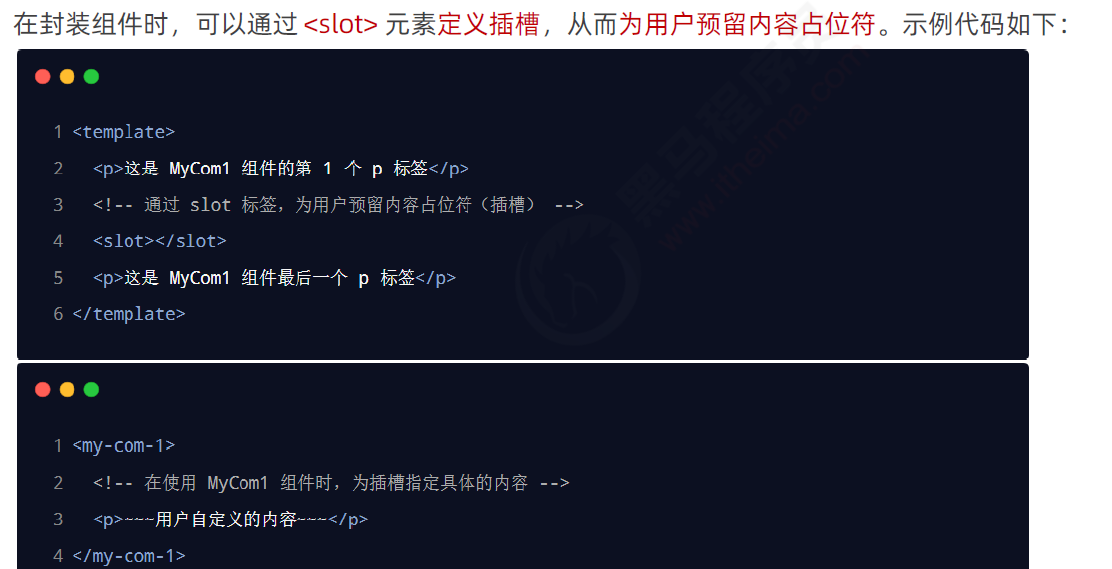
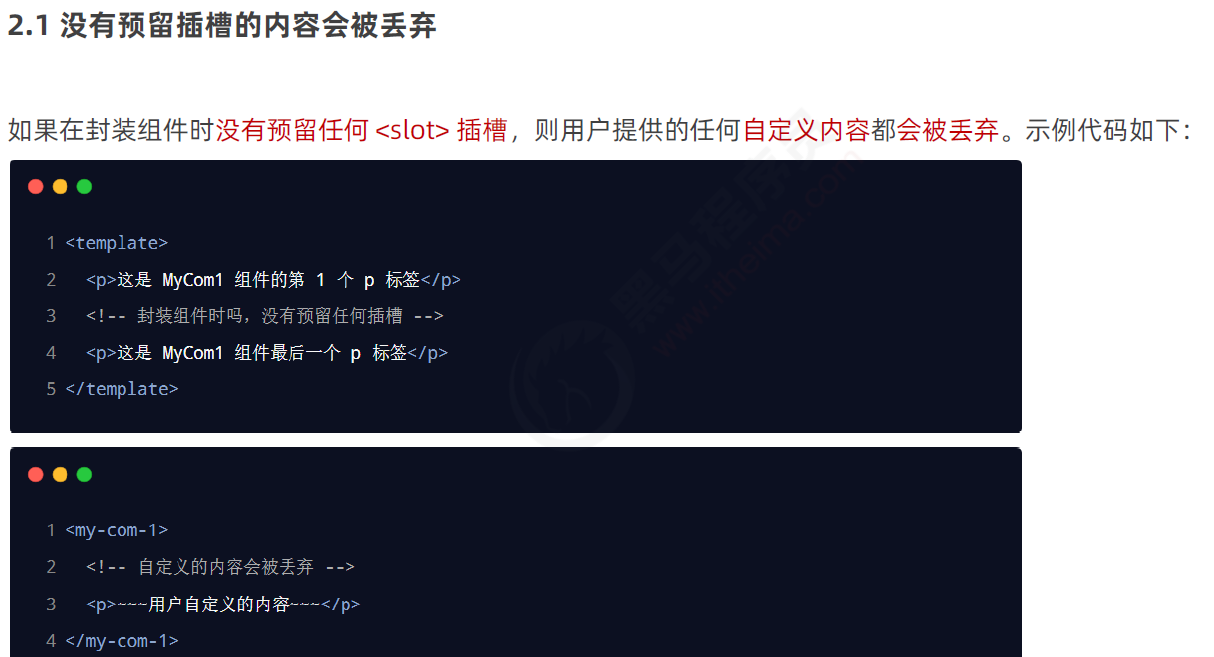
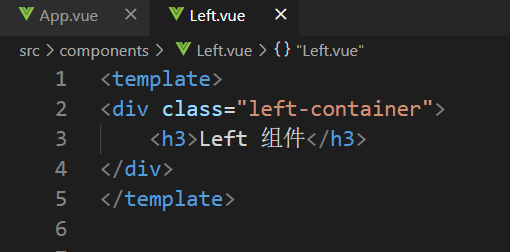
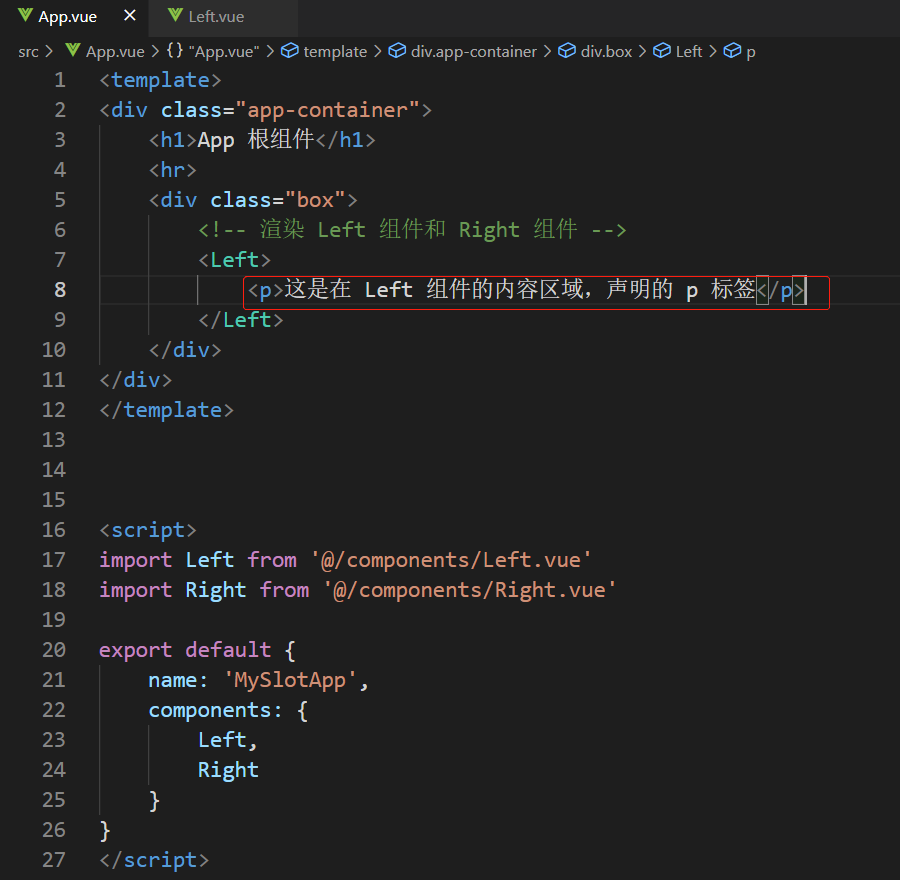
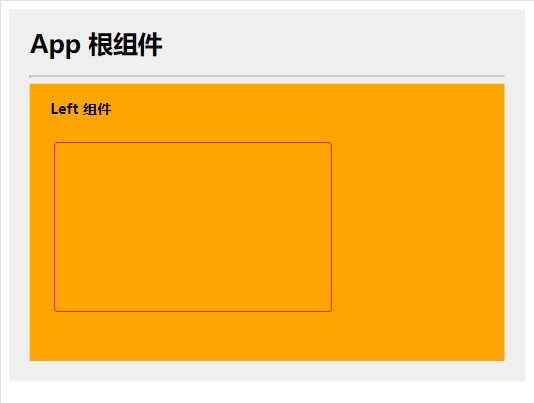
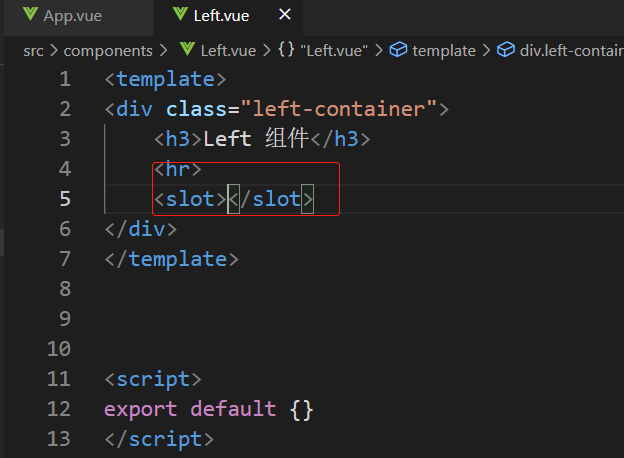
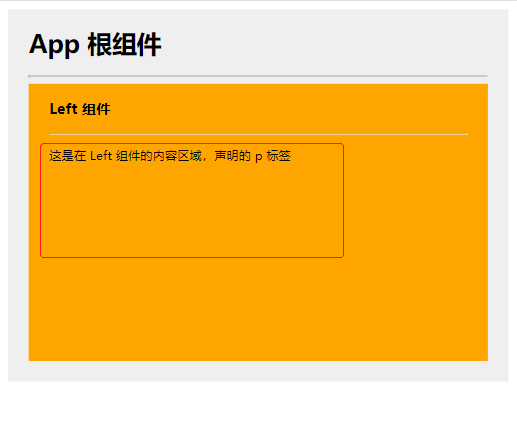
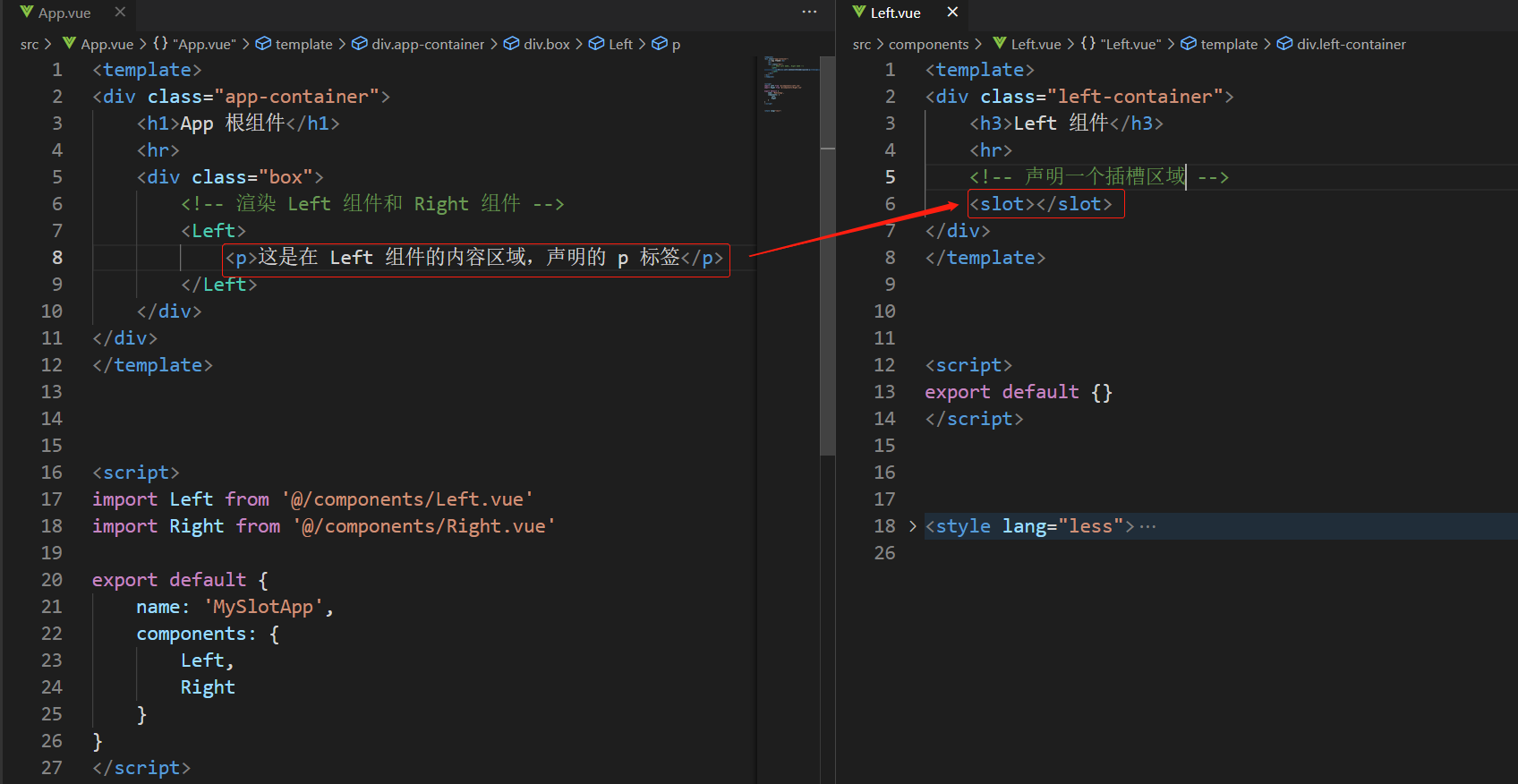


3 v-slot指令(简写#)
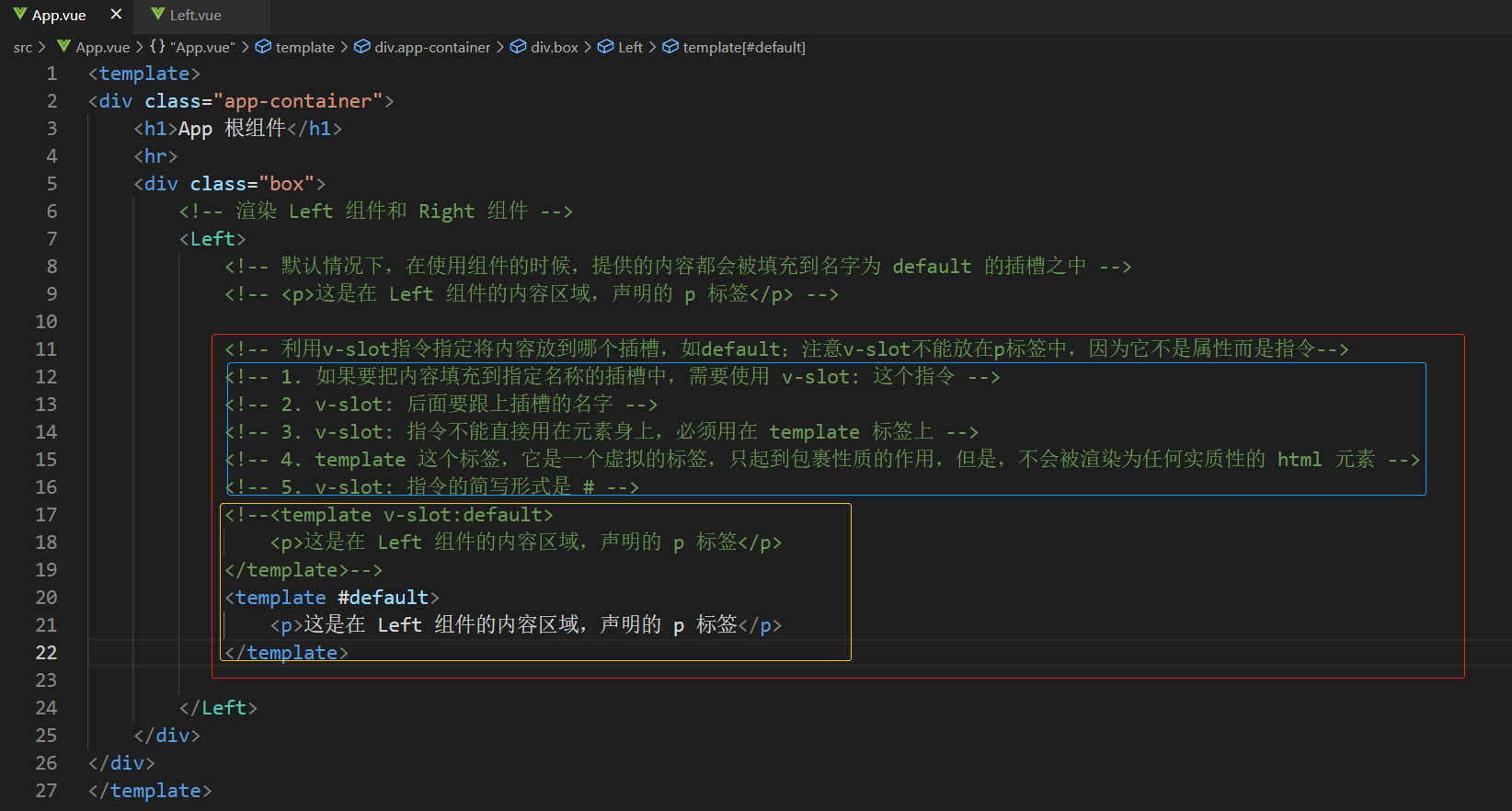
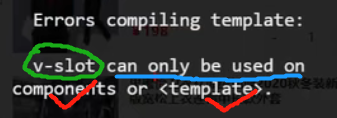
4 插槽的后备内容
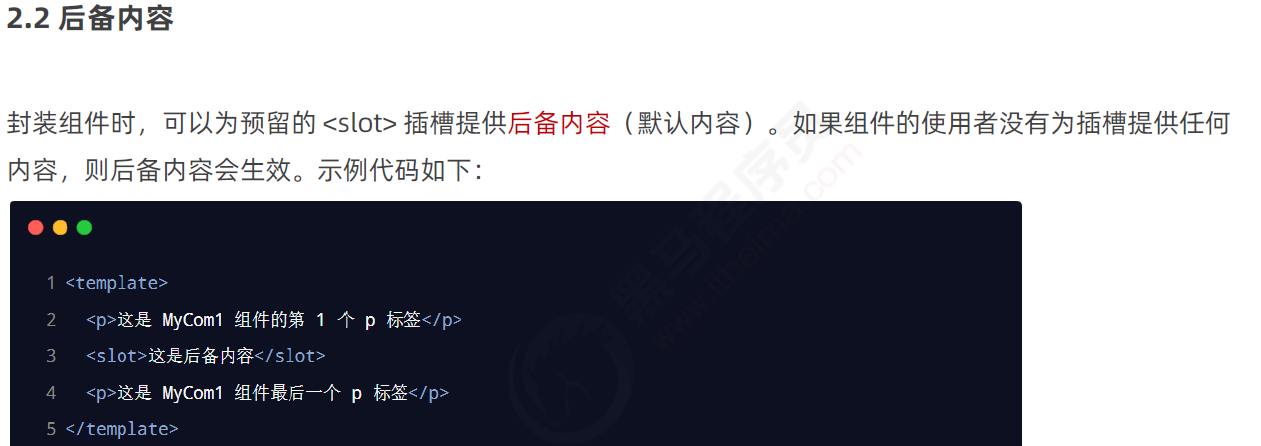
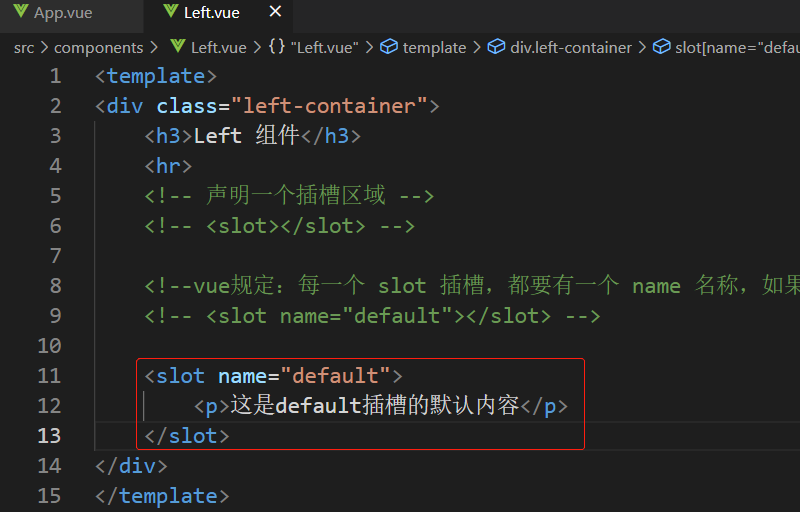
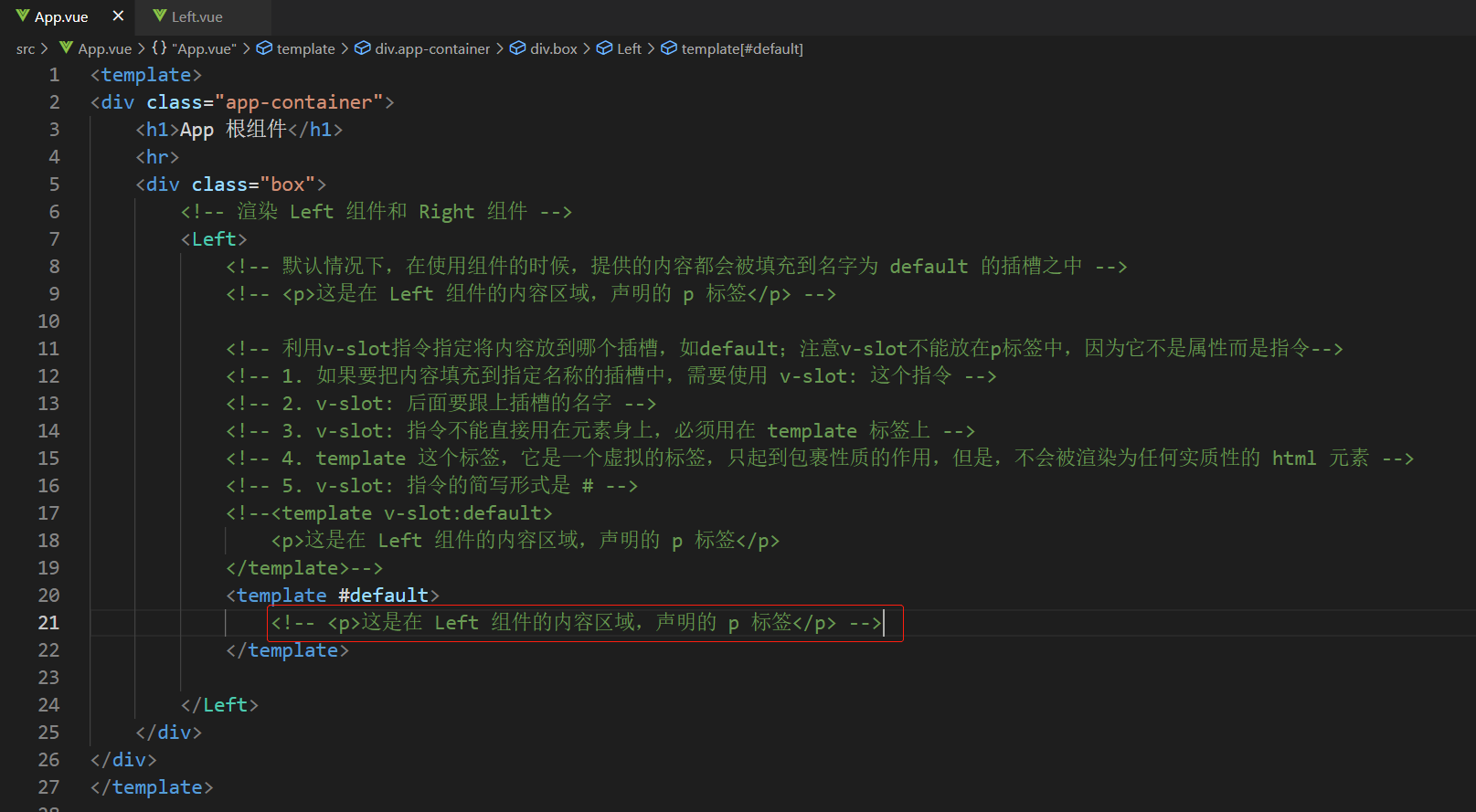
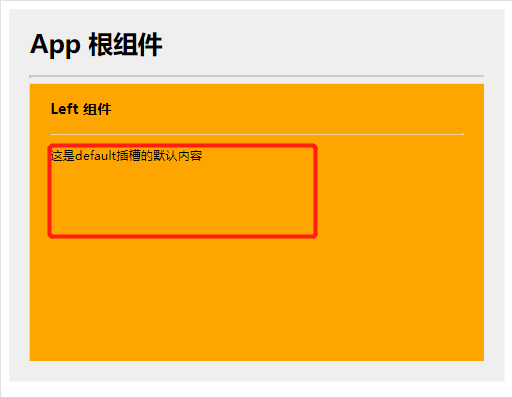
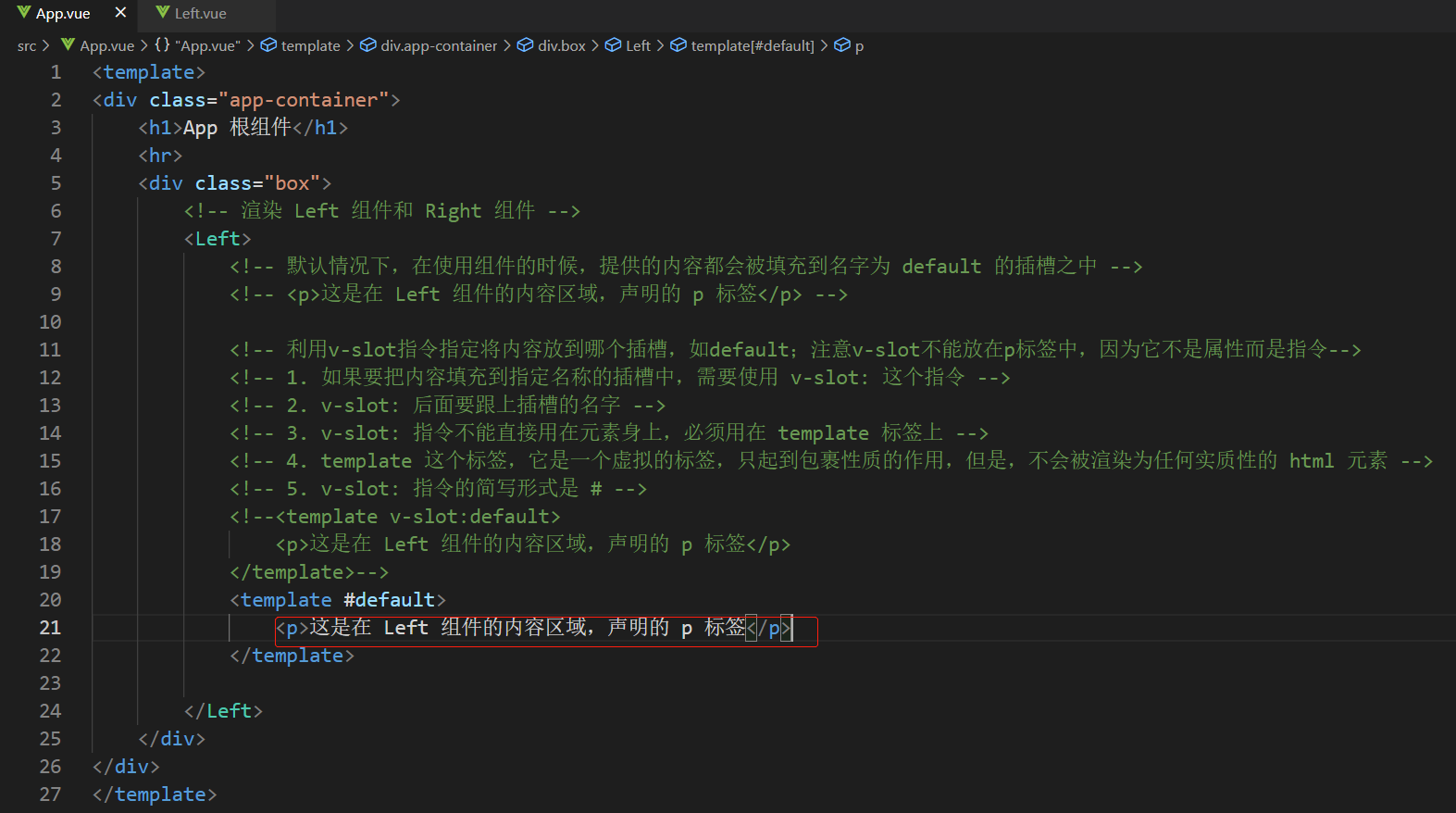
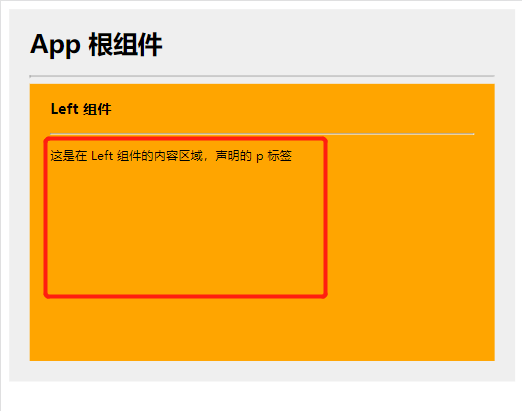
5 具名插槽
5-1 课件
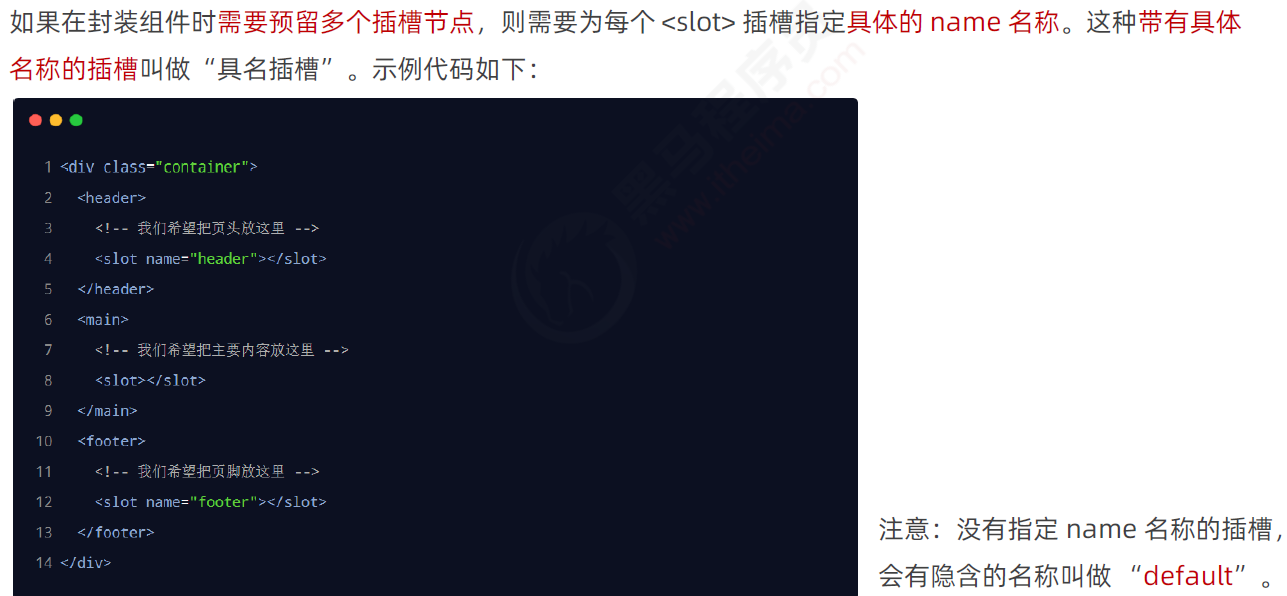
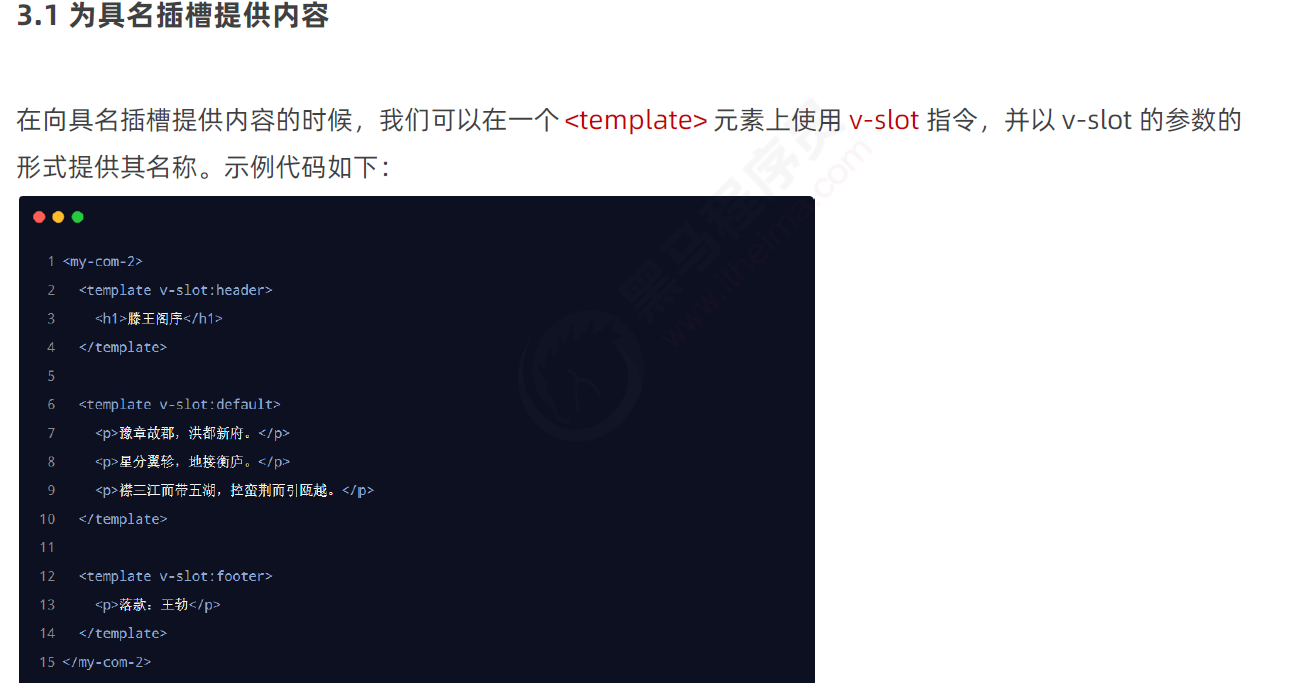

5-2 vant库插槽例子
具名插槽:自定义名字的插槽
匿名插槽:不带自定义名字,默认名字为default,或者自定义为default
Vant - 轻量、可靠的移动端组件库 (youzan.github.io)


5-3 具名插槽基本使用-例子

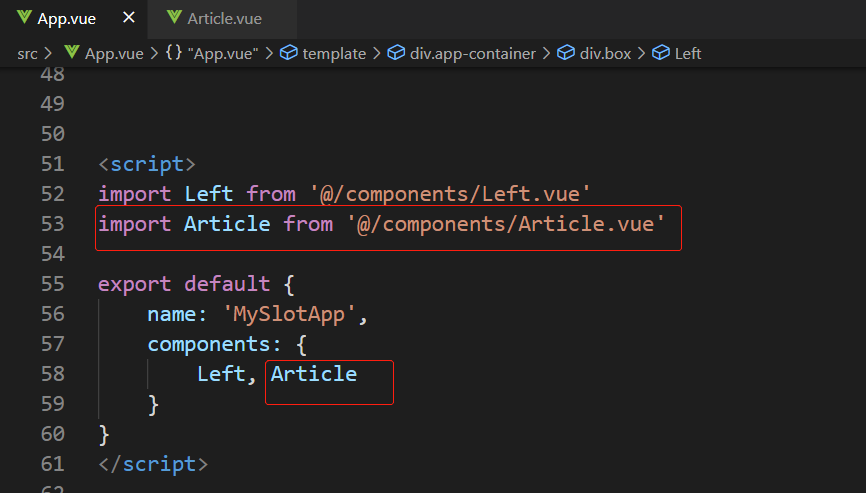
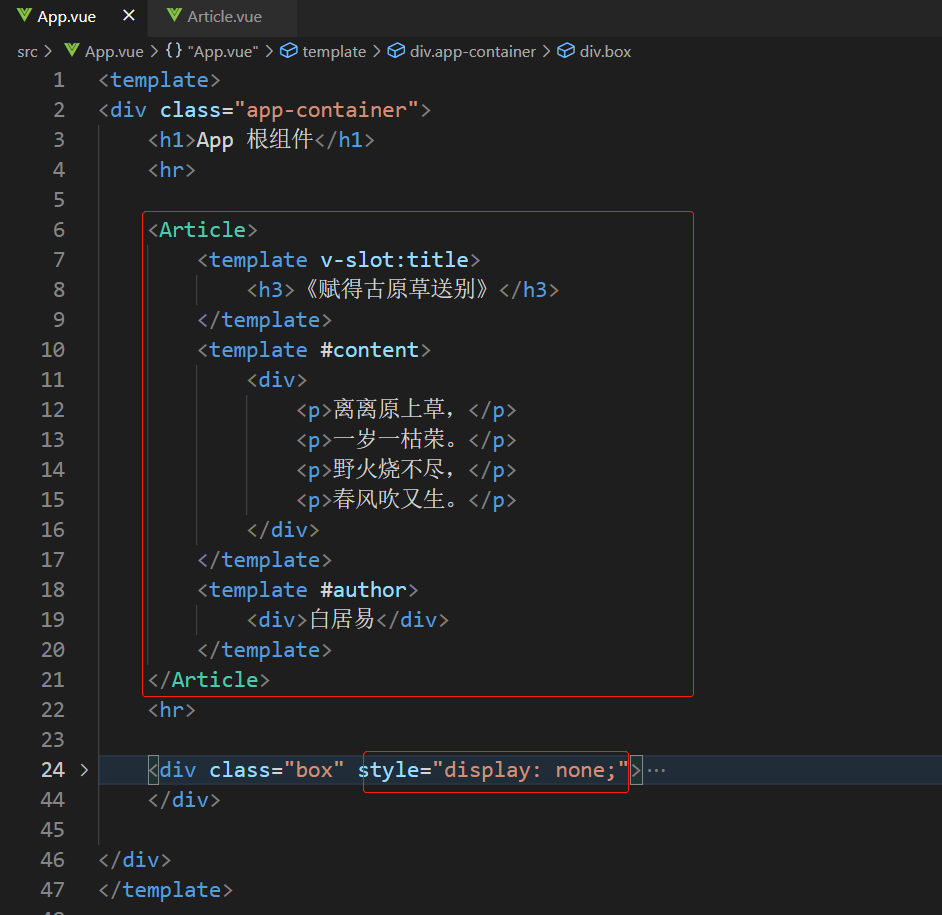
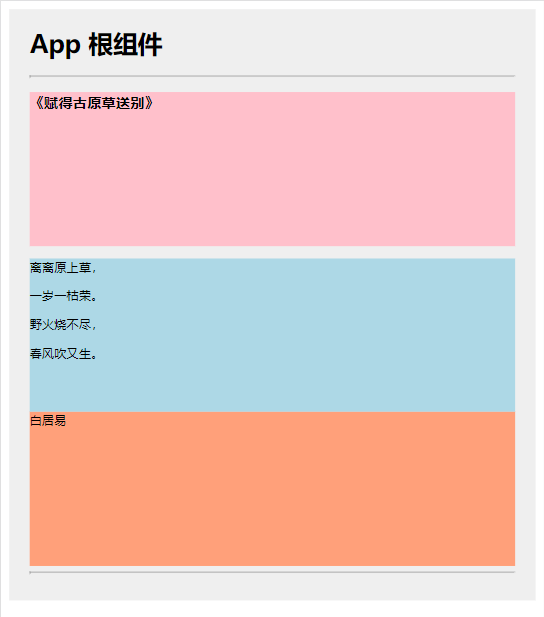
6 作用域插槽
6-1 课件

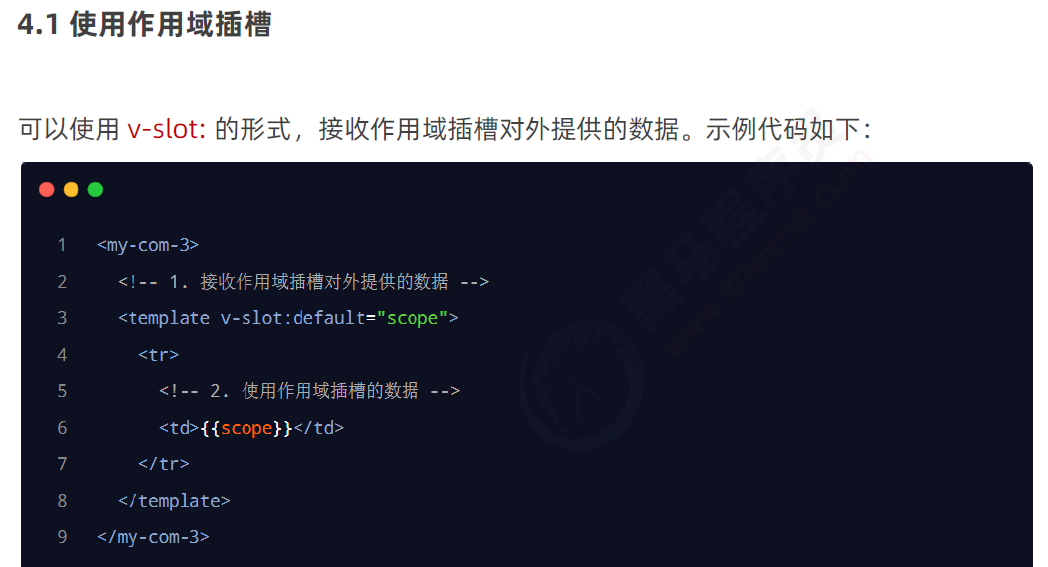
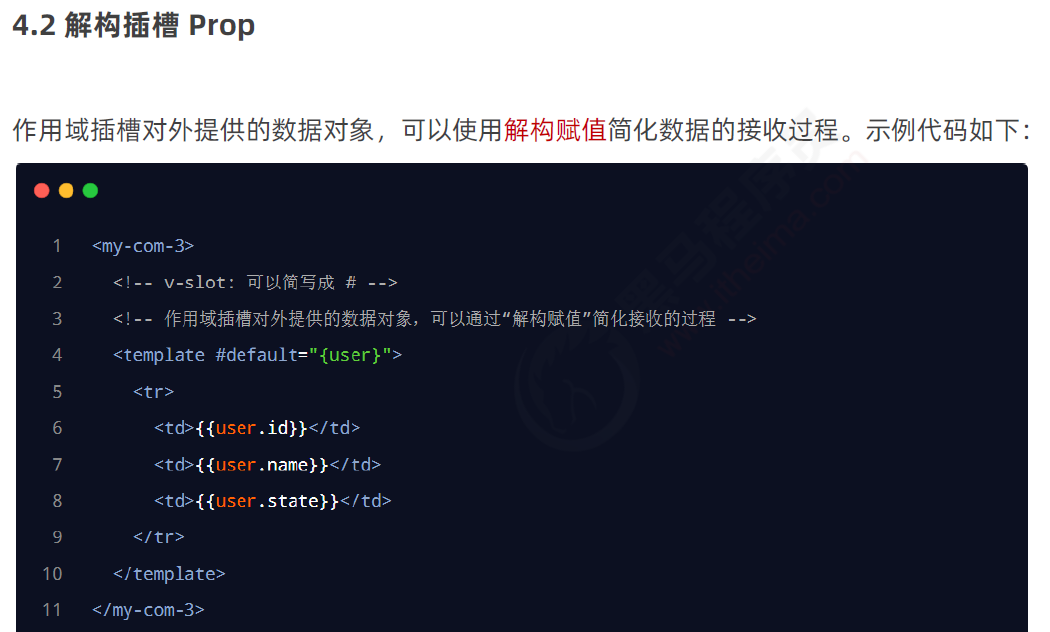
6-2 作用域插槽的基本使用
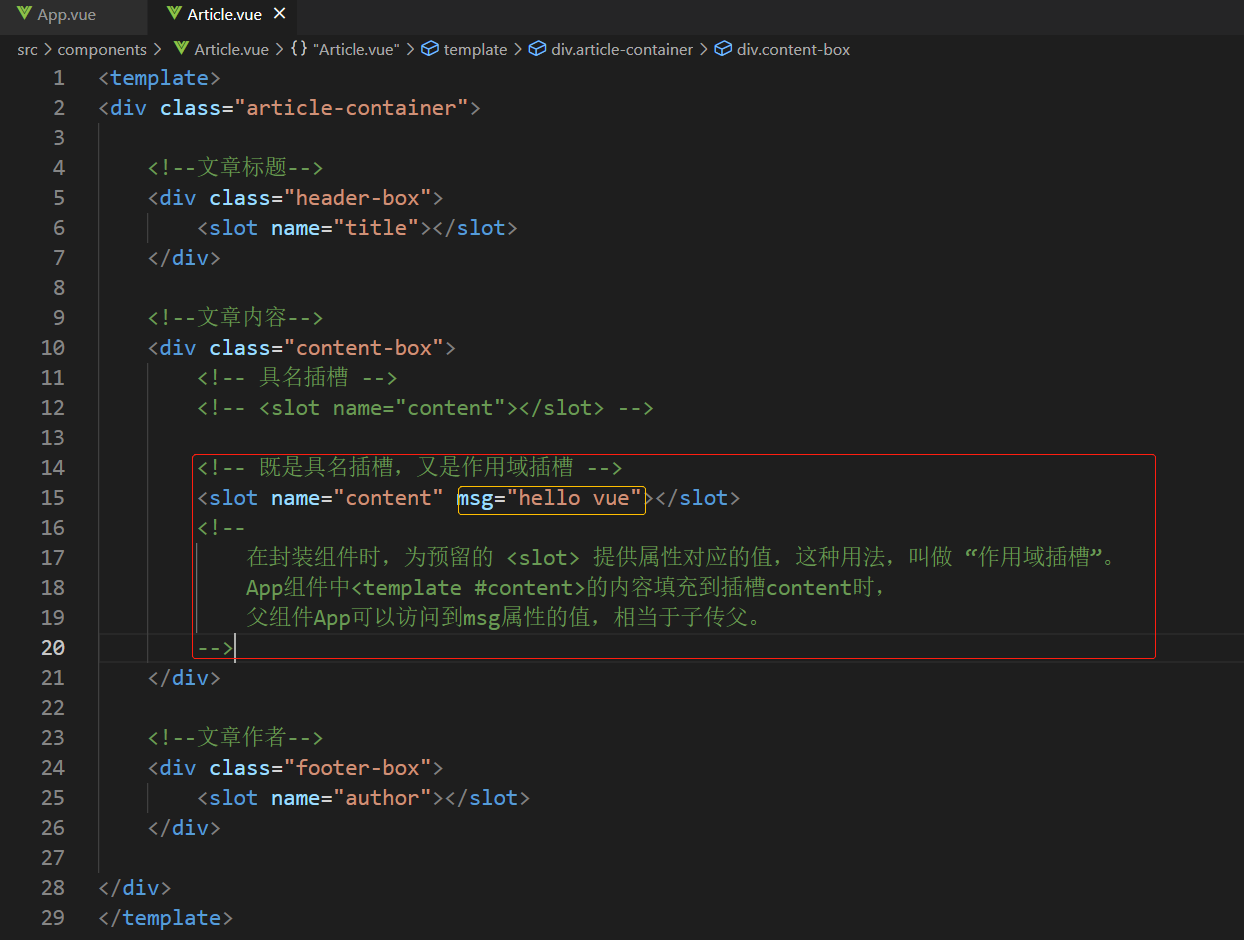
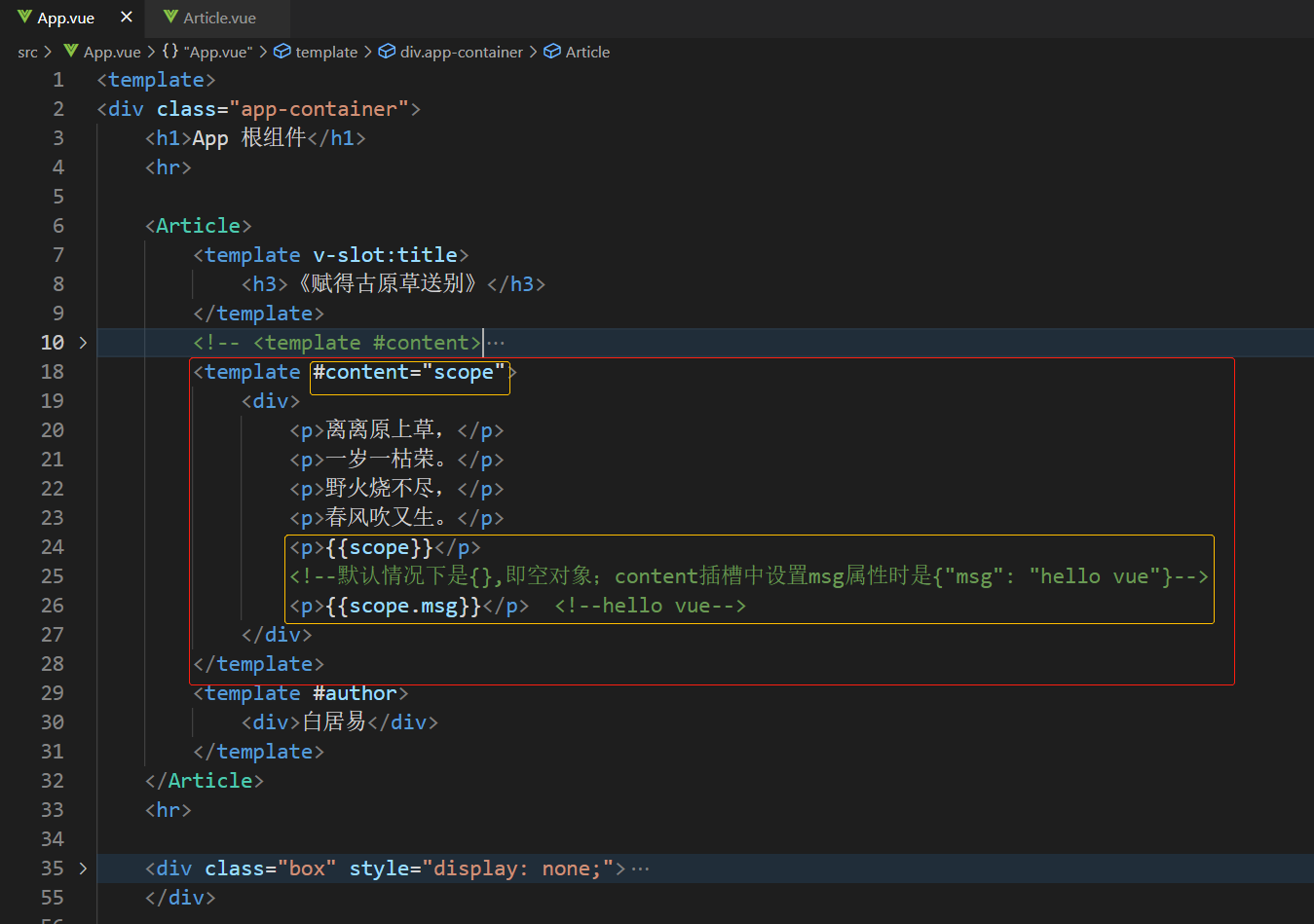
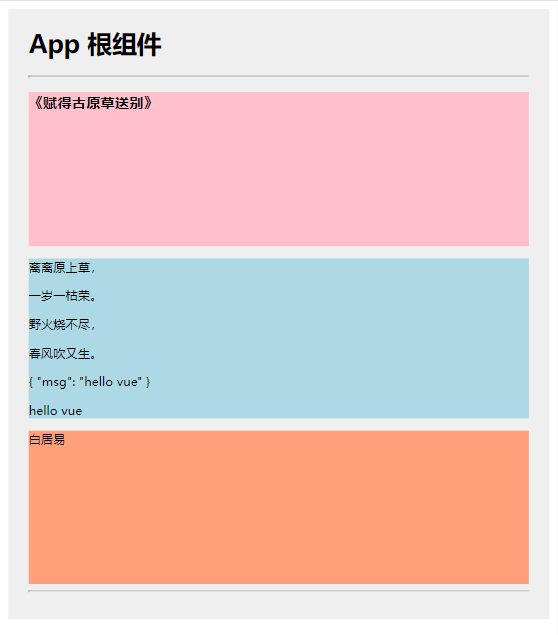
6-3 作用域插槽的解构赋值(解构插槽Prop)
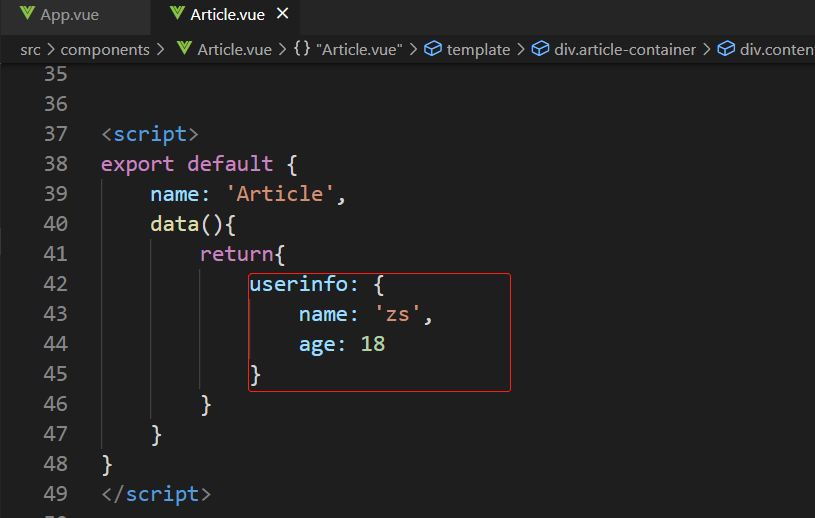
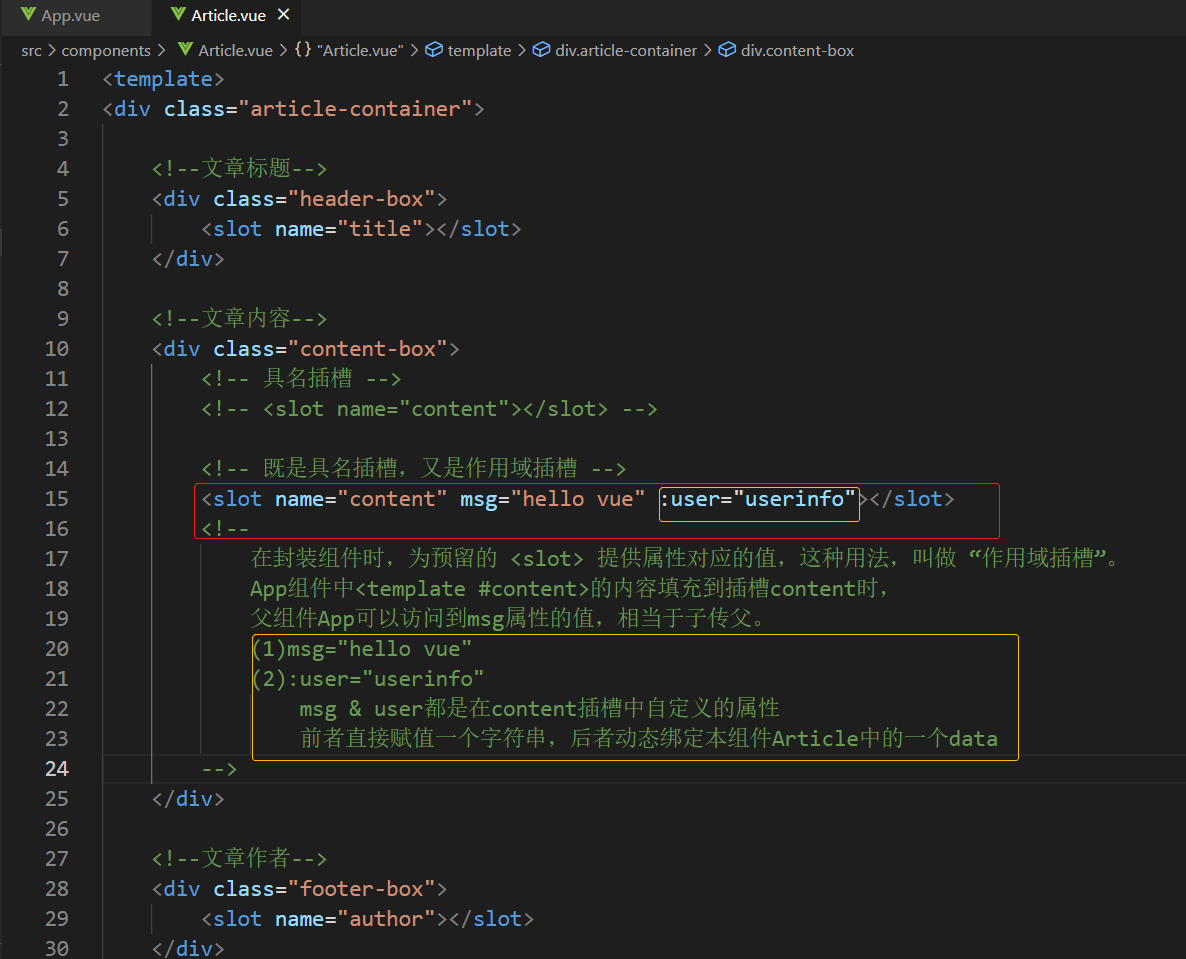
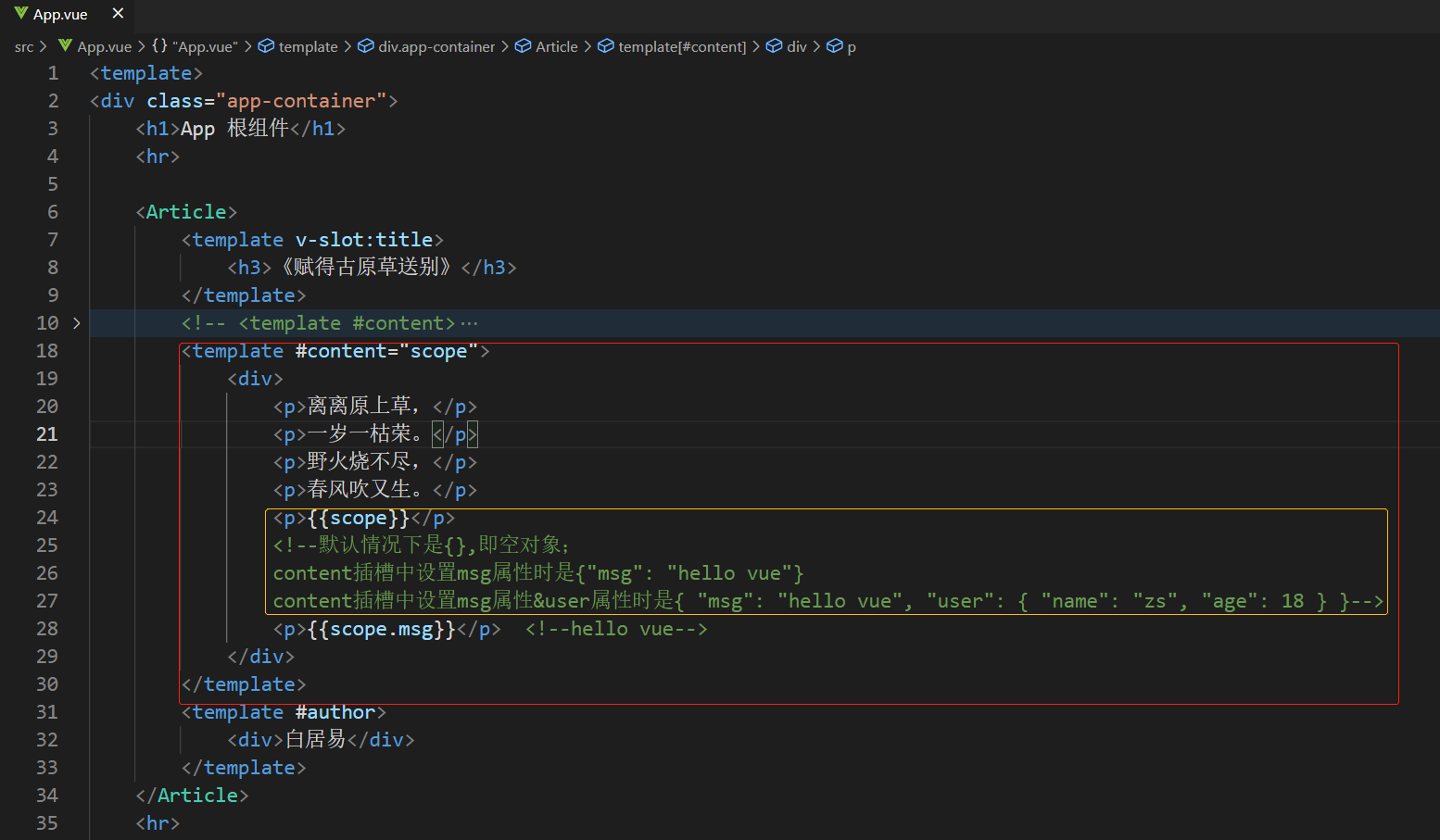
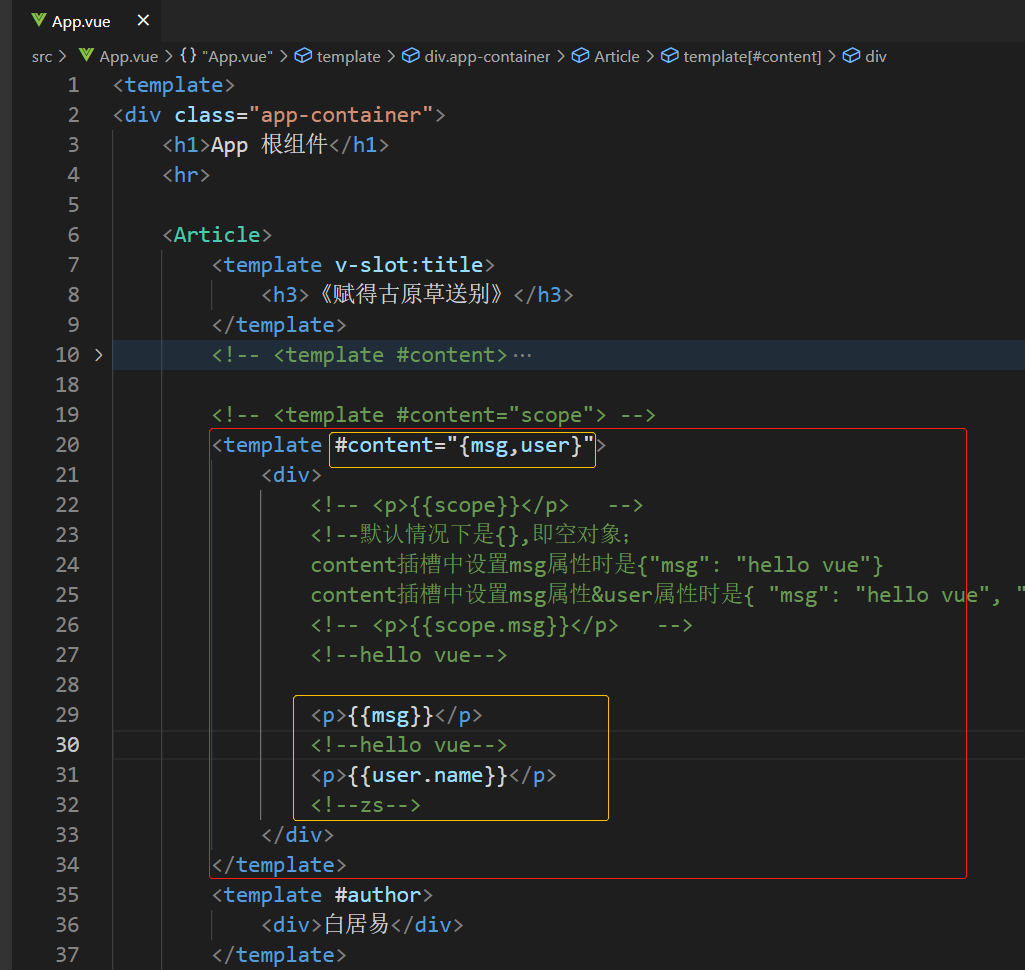
7 源码

<template> <div class="app-container"> <h1>App 根组件</h1> <hr> <Article> <template v-slot:title> <h3>《赋得古原草送别》</h3> </template> <!-- <template #content> <div> <p>离离原上草,</p> <p>一岁一枯荣。</p> <p>野火烧不尽,</p> <p>春风吹又生。</p> </div> </template> --> <!-- <template #content="scope"> --> <template #content="{msg,user}"> <div> <!-- <p>{{scope}}</p> --> <!--默认情况下是{},即空对象; content插槽中设置msg属性时是{"msg": "hello vue"} content插槽中设置msg属性&user属性时是{ "msg": "hello vue", "user": { "name": "zs", "age": 18 } }--> <!-- <p>{{scope.msg}}</p> --> <!--hello vue--> <p>{{msg}}</p> <!--hello vue--> <p>{{user.name}}</p> <!--zs--> </div> </template> <template #author> <div>白居易</div> </template> </Article> <hr> <div class="box" style="display: none;"> <!-- 渲染 Left 组件和 Right 组件 --> <Left> <!-- 默认情况下,在使用组件的时候,提供的内容都会被填充到名字为 default 的插槽之中 --> <!-- <p>这是在 Left 组件的内容区域,声明的 p 标签</p> --> <!-- 利用v-slot指令指定将内容放到哪个插槽,如default;注意v-slot不能放在p标签中,因为它不是属性而是指令--> <!-- 1. 如果要把内容填充到指定名称的插槽中,需要使用 v-slot: 这个指令 --> <!-- 2. v-slot: 后面要跟上插槽的名字 --> <!-- 3. v-slot: 指令不能直接用在元素身上,必须用在 template 标签上 --> <!-- 4. template 这个标签,它是一个虚拟的标签,只起到包裹性质的作用,但是,不会被渲染为任何实质性的 html 元素 --> <!-- 5. v-slot: 指令的简写形式是 # --> <!--<template v-slot:default> <p>这是在 Left 组件的内容区域,声明的 p 标签</p> </template>--> <template #default> <p>这是在 Left 组件的内容区域,声明的 p 标签</p> </template> </Left> </div> </div> </template> <script> import Left from '@/components/Left.vue' import Article from '@/components/Article.vue' export default { name: 'MySlotApp', components: { Left, Article } } </script> <style lang="less"> .app-container { padding: 1px 20px 20px; background-color: #efefef; } .box { display: flex; } </style>

<template> <div class="left-container"> <h3>Left 组件</h3> <hr> <!-- 声明一个插槽区域 --> <!-- <slot></slot> --> <!--vue规定:每一个 slot 插槽,都要有一个 name 名称,如果省略了 slot 的 name 属性,则有一个默认名称叫做 default--> <!-- <slot name="default"></slot> --> <slot name="default"> <p>这是default插槽的默认内容</p> </slot> </div> </template> <script> export default {} </script> <style lang="less"> .left-container { padding: 0 20px 20px; background-color: orange; min-height: 250px; flex: 1; } </style>

<template> <div class="article-container"> <!--文章标题--> <div class="header-box"> <slot name="title"></slot> </div> <!--文章内容--> <div class="content-box"> <!-- 具名插槽 --> <!-- <slot name="content"></slot> --> <!-- 既是具名插槽,又是作用域插槽 --> <slot name="content" msg="hello vue" :user="userinfo"></slot> <!-- 在封装组件时,为预留的 <slot> 提供属性对应的值,这种用法,叫做 “作用域插槽”。 App组件中<template #content>的内容填充到插槽content时, 父组件App可以访问到msg属性的值,相当于子传父。 (1)msg="hello vue" (2):user="userinfo" msg & user都是在content插槽中自定义的属性 前者直接赋值一个字符串,后者动态绑定本组件Article中的一个data --> </div> <!--文章作者--> <div class="footer-box"> <slot name="author"></slot> </div> </div> </template> <script> export default { name: 'Article', data(){ return{ userinfo: { name: 'zs', age: 18 } } } } </script> <style lang="less" scoped> .article-container { > div { min-height: 150px; } .header-box { background-color: pink; } .content-box { background-color: lightblue; } .footer-box { background-color: lightsalmon; } } </style>



 浙公网安备 33010602011771号
浙公网安备 33010602011771号